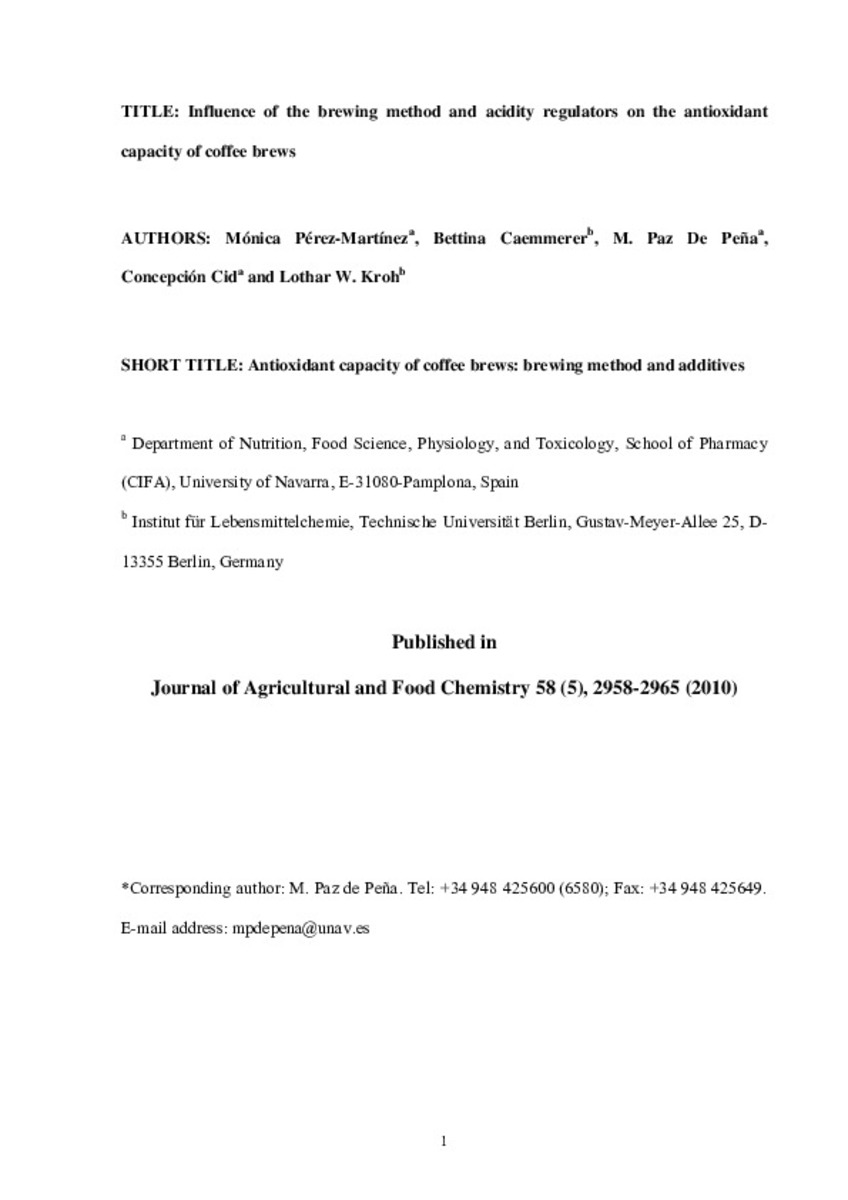Influence of the brewing method and acidity regulators on the antioxidant capacity of coffee brews
Palabras clave :
Coffee
Antioxidants
Phenolics
Chlorogenic acids
Melanoidins
Additives
Coffee brews
Fecha de publicación :
2010
Editorial :
American Chemical Society
Cita:
Pérez-Martínez M, Caemmerer B, De Peña MP, Cid C, Kroh LW. Influence of Brewing Method and Acidity Regulators on the Antioxidant Capacity of Coffee Brews. J Agric Food Chem 2010 MAR 10;58(5):2958-2965
Aparece en las colecciones:
Estadísticas e impacto
0 citas en

Los ítems de Dadun están protegidos por copyright, con todos los derechos reservados, a menos que se indique lo contrario.







